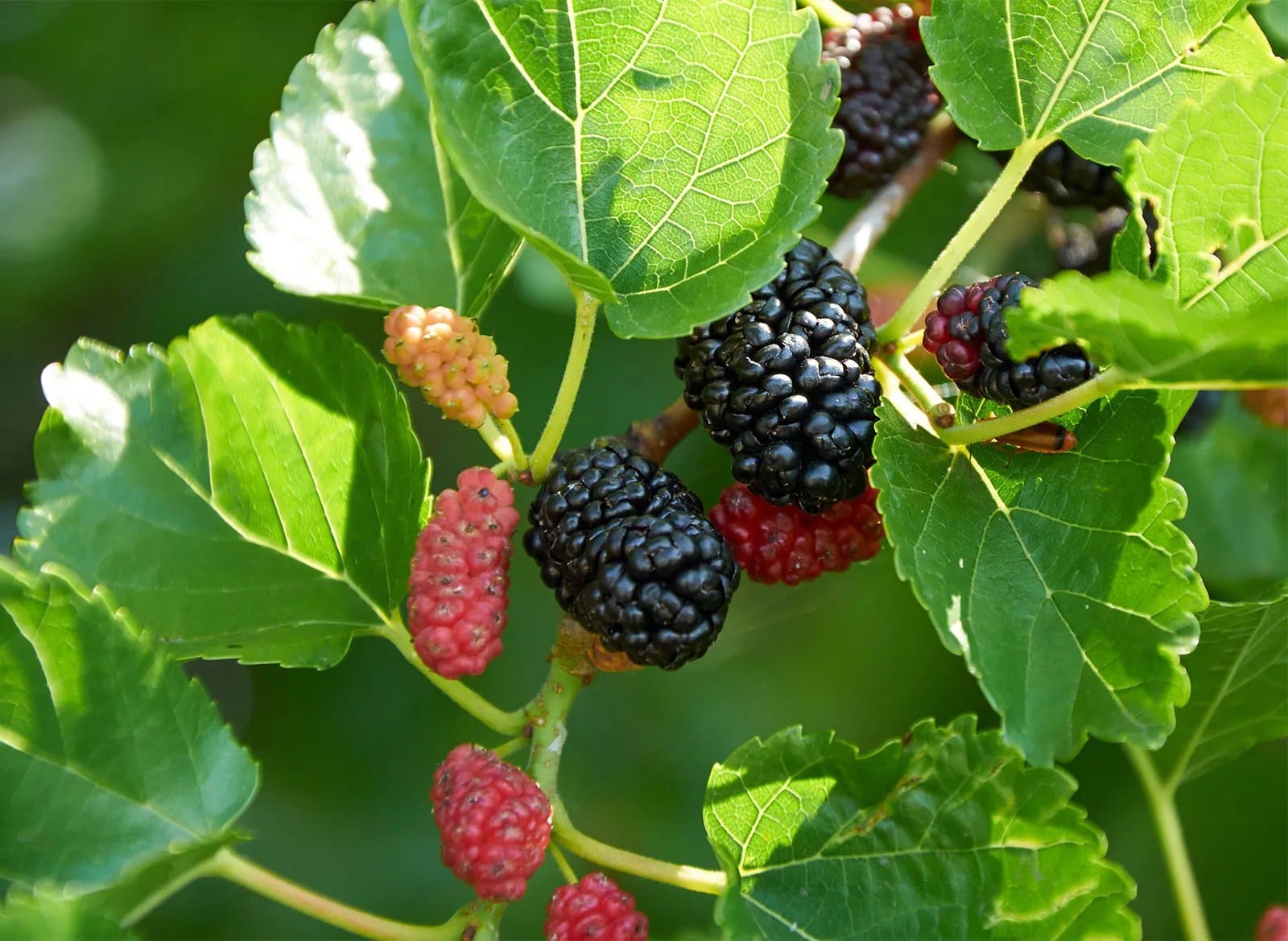The mulberry tree evokes childhood memories with its association to the classic nursery rhyme. Beyond nostalgia, this versatile plant offers a wealth of uses, from its delicious fruit to its historical significance. This comprehensive guide explores the enchanting world of mulberries, from planting and care to cultural impact and culinary applications.
Planting Your Own Mulberry Haven
Growing a mulberry tree can be a rewarding experience. Here’s a simplified guide to get you started:
Choosing the Right Spot: Mulberry trees thrive in full sun, requiring at least six hours of direct sunlight daily. Ensure adequate drainage to prevent root rot.
Soil Preparation: While adaptable, mulberries prefer well-drained, slightly acidic to neutral soil. Amending with compost enriches the soil and improves drainage.
Planting: Dig a hole twice as wide and as deep as the root ball. Place the sapling in the hole, ensuring the top of the root ball is level with the ground. Backfill and firm gently.
Watering: Water deeply and consistently, especially during the first year, to establish a strong root system. Avoid overwatering.
Feeding: An annual application of balanced fertilizer in spring can support healthy growth and fruit production, but it isn’t essential.
Pruning: Prune during dormancy (winter) to shape the tree, remove dead or diseased branches, and encourage fruiting.
Exploring Mulberry Varieties
Mulberries boast a variety of colors and flavors. Here are some popular types:
| Variety | Fruit Color | Characteristics |
|---|---|---|
| Black Mulberry | Dark Purple/Black | Rich, sweet flavor, often used in jams and wines |
| White Mulberry | White/Pink | Mildly sweet, commonly used in silkworm farming |
| Red Mulberry | Deep Red | Sweet and slightly tart, a favorite for birds |
Culinary Delights with Mulberries
Mulberries’ sweet, juicy flavor makes them incredibly versatile in the kitchen:
- Fresh: Enjoy them straight from the tree.
- Jams and Preserves: Capture the essence of summer in a jar.
- Pies and Cobblers: The rich flavor complements flaky crusts.
- Smoothies and Yogurts: A flavorful and antioxidant-rich boost.
- Wine and Liqueurs: A unique and sophisticated beverage experience.
Mulberry’s Cultural and Medicinal Significance
The mulberry tree holds cultural and historical significance. The “Mulberry Bush” rhyme may be linked to a women’s prison in England, where inmates supposedly exercised around a mulberry tree. Traditionally, mulberries have been used medicinally; leaves, bark, and fruit appearing in various remedies. Research suggests potential antioxidant and anti-inflammatory properties, but further studies are necessary. Do you know the expected lifespan of patients suffering from lymphedema? Click on the link to read more on lymphedema life expectancy.
Mulberry Tree vs. Bush: Clearing the Confusion
The term “mulberry bush” is a common misnomer. All mulberries grow on trees, not bushes. “Bush” likely refers to smaller, pruned trees. These trees vary in size depending on variety and pruning practices. They thrive in sunny locations with well-drained soil and prefer warmer temperatures. If you are looking for more information regarding a laryngectomy tube, be sure to visit our page about laryngectomy tube.
There are several mulberry varieties, including black (Morus nigra), white (Morus alba), and red (Morus rubra), each with distinct flavors and colors.
| Mulberry Type | Scientific Name | Fruit Color | Flavor Profile |
|---|---|---|---|
| Black Mulberry | Morus nigra | Dark Purple | Sweet, rich, slightly tart |
| White Mulberry | Morus alba | White/Cream | Mild, less intense |
| Red Mulberry | Morus rubra | Red | Tart, slightly sweet |
Mulberries are incredibly versatile—enjoyed fresh, blended into smoothies, incorporated into baked goods, or transformed into jams, jellies, and even wine. Ongoing research continues to explore the properties of different mulberry species, and there’s some debate surrounding the classification of certain varieties.
Decoding “Here We Go Round the Mulberry Bush”
The familiar children’s rhyme “Here We Go Round the Mulberry Bush” has mysterious origins. One theory links it to HMP Wakefield prison in England, where female inmates might have circled a mulberry tree. Another connects it to Britain’s 18th-century attempts to establish a silk industry, as mulberry leaves feed silkworms. The rhyme’s tune predates the lyrics, originating from a dance in the 1750s opera The Beggar’s Opera. While the original meaning remains uncertain, the rhyme has evolved, becoming associated with children’s morning routines.
Finding the Perfect Spot for Your Mulberry Tree
Planting location significantly impacts a mulberry tree’s health and productivity. Consider these factors:
- Sunlight: At least six hours of direct sunlight daily is essential.
- Soil: Well-draining, loamy soil with a pH between 5.5 and 7.0 is ideal. Amend with compost if needed.
- Spacing: Allow 15 to 30 feet between trees, depending on the variety.
- Obstacles: Avoid planting near buildings or utilities due to potentially invasive roots.
- Wind: A sheltered spot is preferable, though some mulberries can serve as windbreaks.
| Factor | Ideal Conditions |
|---|---|
| Sunlight | At least 6 hours of direct sunlight per day |
| Soil | Well-draining, loamy soil with a pH of 5.5-7.0 |
| Spacing | 15-30 feet apart, depending on the variety |
| Obstacles | Avoid planting near buildings, driveways, or underground utilities |
| Wind Protection | Sheltered location or windbreak if necessary |
Ongoing research continues to refine our understanding of optimal mulberry growing conditions. By following these guidelines, you’ll be well on your way to enjoying a thriving mulberry tree and a bountiful harvest.
- Star Ring Trends: Etsy vs Amazon - March 28, 2025
- Boost Pollinator Habitats: Baby Blue Eyes Sustainable Farming Guide - March 28, 2025
- Protect Big Black Bears: Effective Conservation Strategies - March 28, 2025
















